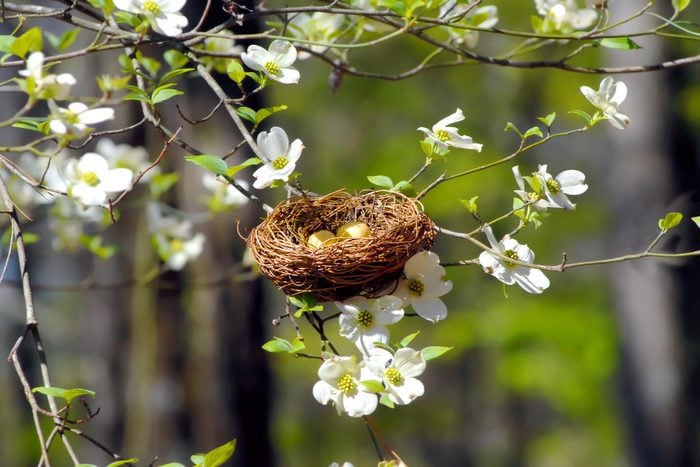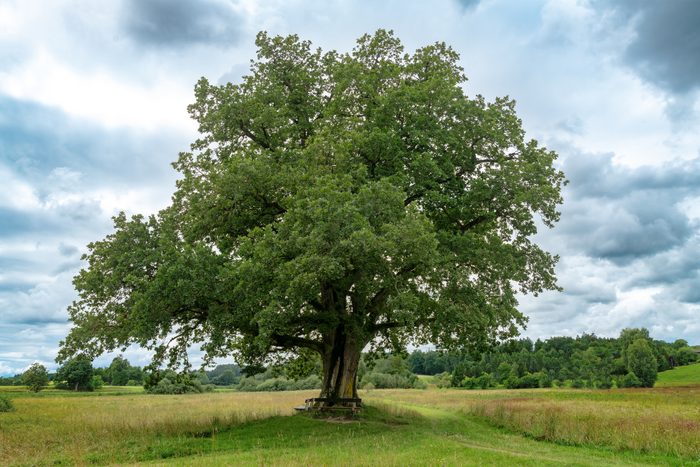
Oak Trees
Oak trees are a keystone species across the country, collectively supporting nearly 500 species of caterpillars. Their acorns also feed deer, rabbits, birds, squirrels and foxes. Some oaks even support bats.
“Oaks are rich in history due to their stature, quality hardwood and benefits to wildlife,” says Glassey. “Some feel worried these giants will fall [down], but just remember to give them proper soil conditions, nutrients and water.”
You’ll need a big yard to plant most oaks, of course, and there are a lot to choose from. Out of the more than 50 native to the U.S., keystone species by region include: white and black oaks for northern forests; bur oak, post oak and blackjack oak for the Great Plains; and Gambel and scrub oak for North American deserts.
Most oaks prefer well-draining sunny locations and benefit from regular watering and minimal pruning.
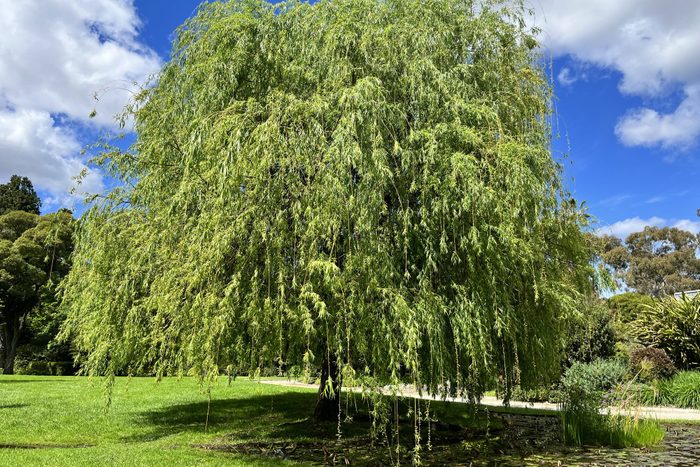
Willow Trees
Willow roots slow water flow, helping control flooding, while their big, bushy bodies provide habitat for birds and other wildlife.
More than 300 species of caterpillars use willow leaves for food, so planting one means an abundance of butterflies and moths, including tiger swallowtails, mourning cloaks and sylvan hairstreaks. Willow flowers are also food for bumblebees and other insects. “Some people feel they are messy, but the immense benefits to wildlife outweigh the mess to me,” says Glassey.
Willows are native to much of the country, and species range from trees to shrubs. It’s important to plant one that is native to your area, especially if you’re in a dry region, because they use a lot of water. Most willows prefer sunny, moist to wet soil. Don’t plant them near your house or other structures because their root systems can be invasive.
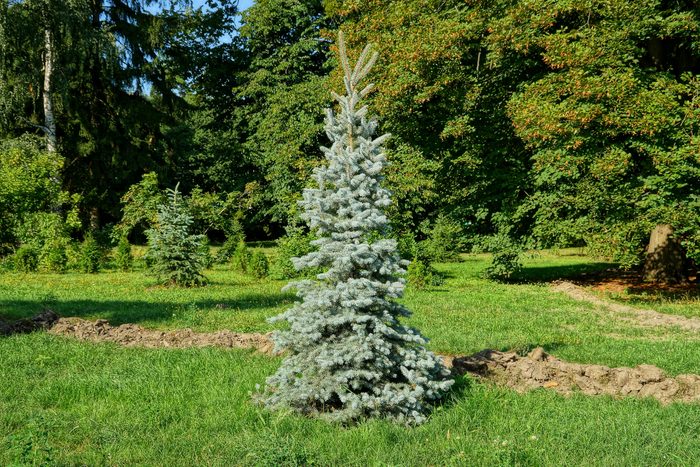
Pine Trees
Pines provide food for caterpillars, nesting space for crows and hawks and nesting material for other birds and small mammals. Some birds have even adapted to retrieve pine seeds from within the cones, like nuthatches and crossbills.
They’re also great carbon sinks, absorbing large amounts of carbon dioxide from the atmosphere while helping with soil stability and nutrient cycling.
Pines are native to much of the country but choose one native to your particular area. In the Northern forests, try pitch pine, Eastern white pine and Virginia pine, all top keystone species. In the West, lodgepoles and ponderosas are good choices because they’re more resistant to wildfire. In hurricane-prone regions, longleaf pine offers more wind resistance than other species.
Pines like sunlight and well-draining soil. Water deeply when young, Ali says. Also mulch, protect from strong winds and selectively prune and monitor for pests, diseases and signs of stress.
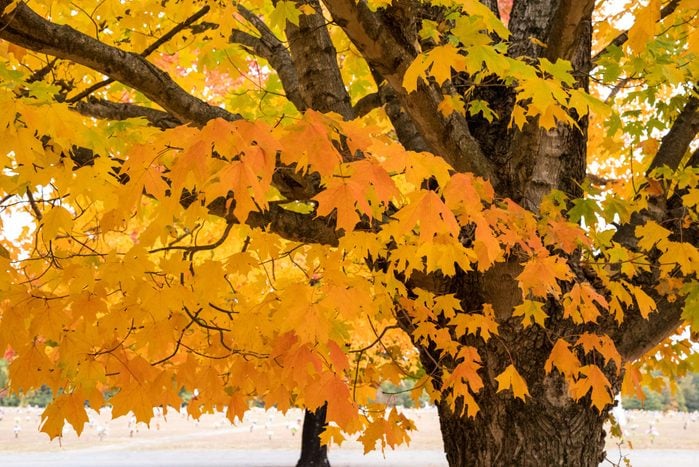
Maple Trees
While the large maples in the Eastern U.S. are most celebrated for their fall foliage, a range of smaller maples are native to the West.
Wherever you live, they’re sure to lure caterpillars and other insects that, in turn, attract insect-loving birds like kinglets and warblers, says Pantin. Their nectar-rich flowers are great for pollinators. Owls, woodpeckers, warblers and tanagers nest in their cavities. Maples also attract deer, moose, squirrels and porcupines.
In the East, from Missouri to Maine, native sugar maples are known for their fall colors. In the Great Plains, silver maples are a keystone species. And in the West and Northwest, bigleaf and Rocky Mountain maples are good bets.
Maples prefer full-to-part sun and dry to moist soil. Ali says mulch around the base, water regularly during establishment and dry spells, prune selectively to remove dead or diseased branches and monitor for pests.
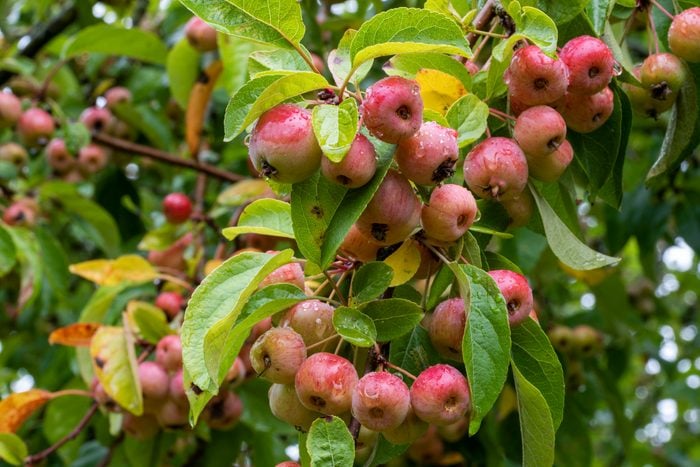
Crabapple Trees
Crabapples are good for medium to smaller yards because their roots aren’t too invasive and the trees only grow 10 to 20 feet tall.
Their pink springtime blooms make humans cheery while also supporting bees, butterflies and other pollinators. Crabapple trees also provide nesting space and shelter for birds and small animals, and their fruit is a good food source for birds.
Some crabapple species came from Europe, but at least three are native, keystone species: sweet crabapple in the Northern forests; prairie crabapple in the Great Plains; and Oregon crabapple in the Northwest. But even if you have a non-native crabapple, it’s still a worthy habitat.
Plant crabapple in sunny locations with well-draining soil, and provide regular watering during their establishment period, says Ali.
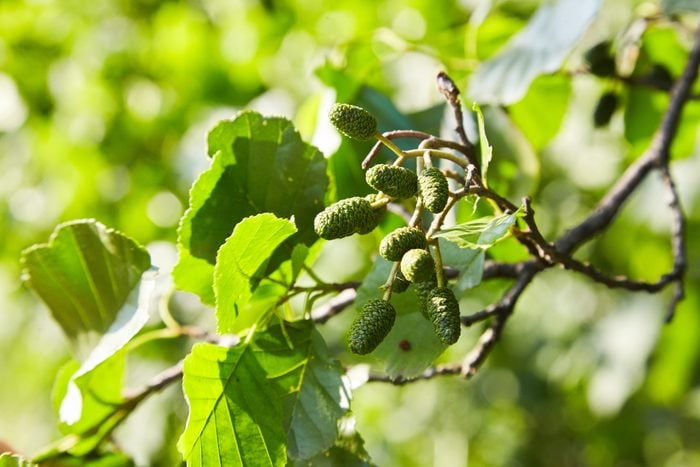
Alder Trees
If you live in wet woodlands or along a canal or riverbank, alder trees and shrubs create excellent habitat. Their seeds attract songbirds, and their abundance of insects and caterpillars great for bluebirds and chickadees. Moose, deer, rabbits and muskrats thrive in alder thickets.
“These trees also provide shelter to fish and food for invertebrates, which in turn are a great food source for salmon and brown trout,” says Glassey. “The wood of a common alder does not rot!”
Various species of native alders abound from Texas into the middle and Northern states, from near sea level up to 10,000 feet. Depending on the species, sizes can range from tall trees to shrubs. Most prefer full sun to part shade. Plant one native to your region and steer clear of European black alder, which can be invasive in places.
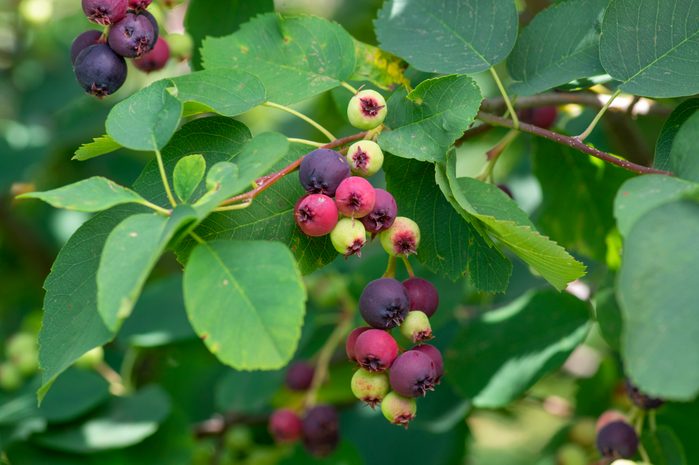
Serviceberry Trees
Serviceberries are good for medium-sized yards. They can grow to 30 feet, but more often end up as multi-stemmed shrubs half that size. Their early-spring blooms are great for bees, plus they’re a host plant for swallowtail and other butterflies.
Their berries bring dozens of bird species, from cedar waxwings to cardinals and mockingbirds. The fruits, edible for humans, are often used in jams and pies.
Serviceberries grow in much of the U.S., with native species and their sun and shade needs varying by region. The downy serviceberry occupies a wide range from Florida to Maine, whereas the Saskatoon serviceberry thrives in the dry foothills of the Rocky Mountains.
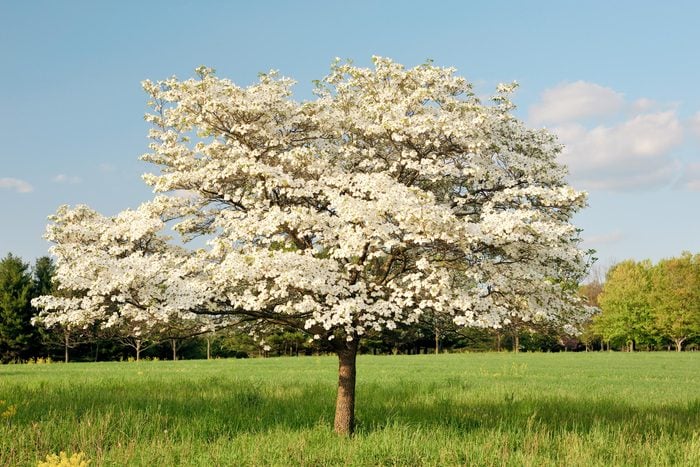
Dogwood Trees
While we marvel at dogwoods for their spring flowers (actually modified leaves called bracts), wildlife particularly appreciates their berry-like fruit. Deer, squirrels, rabbits and dozens of bird species depend on calcium and fat from dogwood berries to survive the winter.
Flowering dogwoods are native from southern Maine thorough eastern Texas and parts of the Midwest. Pacific dogwoods are native to the Northwest through Southern California.
In the forest, wild dogwoods often grow in the understory, below the main canopy of hardwood forests. But in your yard, plant in direct or near-direct sunlight to protect them from dogwood anthracnose disease.
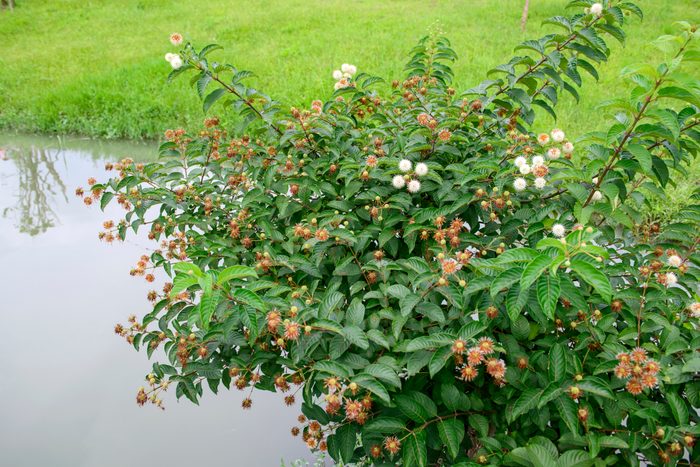
Native Shrubs
Don’t forget the shrubs! Not everything has to be as noble as a tree to be vastly useful to wildlife.
Native shrubs are great for yards of any size. Their dense thickets provide shelter for birds and small mammals, and their leaves, seeds, flowers and berries are good food for birds, insects and other animals.
Every region offers dozens of native shrubs to choose from. A few recommended by our experts include chokecherries, Utah Juniper, elderberry, flowering currant, common winterberry and buttonbush.

